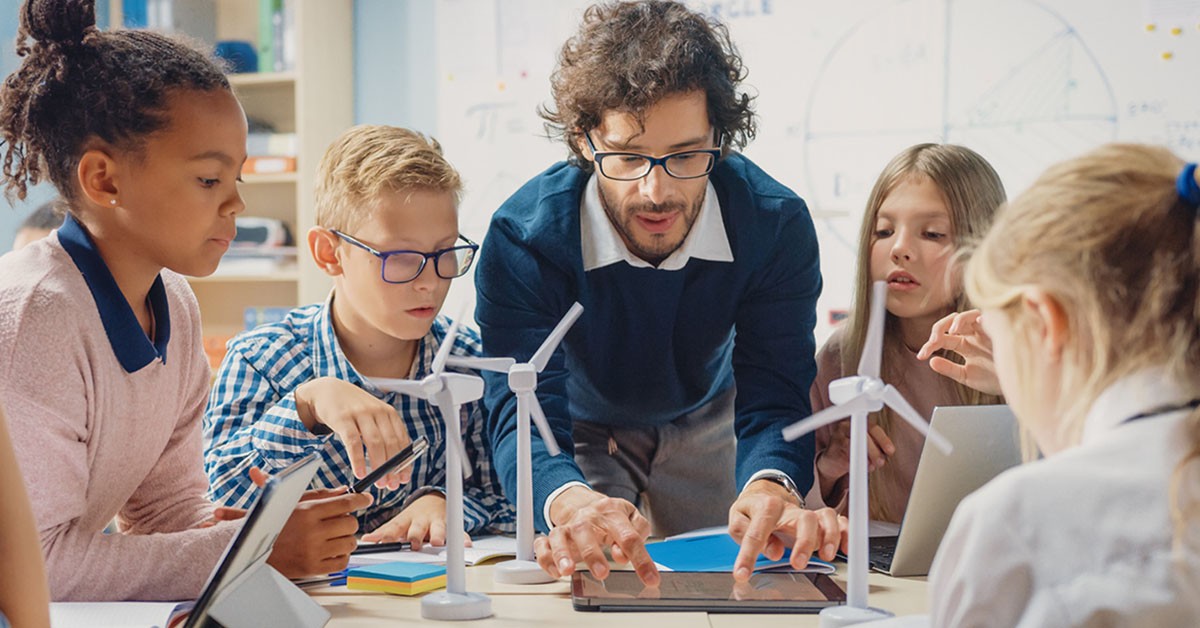The traditional image of a classroom often includes a teacher at the front of the room, standing at a chalkboard, writing lessons for students to copy. However, over the past few decades, there has been a significant transformation in the way education is delivered. The rise of technology has brought about a revolution in Pre school, and one of the most noticeable changes has been the shift from chalkboards to smartboards. In this blog, we will explore the evolution of educational technology, the benefits of smartboards in classrooms, and the challenges they bring.
The Evolution of Educational Technology
The journey from chalkboards to smartboards has been a remarkable one, marked by significant advancements in educational technology. Let’s take a look at the key milestones:
- Chalkboards: Chalkboards have been a staple in classrooms for centuries. Teachers used chalk to write lessons, solve math problems, and illustrate concepts for their students. While effective in their time, they had limitations in terms of interactivity and durability.
- Overhead Projectors: In the mid-20th century, overhead projectors became popular. Teachers could write on transparent sheets and project their notes onto a screen. This allowed for larger visuals but lacked the dynamic interactivity of modern technology.
- Interactive Whiteboards: The late 20th century saw the emergence of interactive whiteboards (IWBs). These digital displays could connect to computers and allowed teachers to write, draw, and interact with educational software. However, they were expensive and had limited functionality.
- Smartboards: Smartboards, also known as interactive whiteboards, took educational technology to a whole new level. They combined the features of a traditional chalkboard with modern digital capabilities. A smartboard is essentially a large touchscreen display that connects to a computer or other devices. Teachers can write, draw, and manipulate content with their fingers or a stylus, making lessons more engaging and interactive.
Benefits of Smartboards in Classrooms
The adoption of smartboards in schools has brought numerous benefits to both teachers and students:
- Enhanced Interactivity: Smartboards encourage active participation and engagement in the classroom. Students can come to the front and interact directly with the content, making lessons more dynamic and immersive.
- Visual Learning: Smartboards enable teachers to use multimedia resources, such as videos, animations, and interactive simulations, to enhance the learning experience. Visual aids can clarify complex topics and cater to different learning styles.
- Digital Resources: Teachers have access to a wealth of digital resources and educational software that can be integrated into lessons. This enables them to adapt their teaching methods to meet individual student needs.
- Easy Integration: Smartboards seamlessly integrate with other technology, such as computers, tablets, and projectors. This versatility allows teachers to switch between different teaching tools effortlessly.
- Record and Share: Smartboards often come with the ability to record lessons. This feature allows teachers to archive their presentations for students to review later or for absent students to catch up on missed content.
Challenges of Implementing Smartboards
While smartboards have revolutionized the classroom, there are some challenges to their adoption:
- Cost: The initial investment in smartboard technology can be substantial. Schools must allocate funds for the purchase of smartboards, as well as ongoing maintenance and software updates.
- Training: Teachers need proper training to make the most of smartboards. Learning to navigate the software and integrate it into their lessons can take time and effort.
- Technical Issues: Like any technology, smartboards can experience technical glitches and downtime. This can disrupt the flow of a lesson and require technical support.
- Accessibility: Ensuring that smartboard technology is accessible to all students, including those with disabilities, can be a challenge. Schools must invest in accessible software and ensure that their classrooms are designed to accommodate all students.
Conclusion
The transition from chalkboards to smartboards represents a significant step forward in the evolution of educational technology. Smartboards have transformed traditional classrooms into interactive and engaging learning environments. While there are challenges associated with their implementation, the benefits they bring to both teachers and students make them a valuable tool in modern education. As technology continues to advance, it is exciting to imagine what the future of education may hold.
